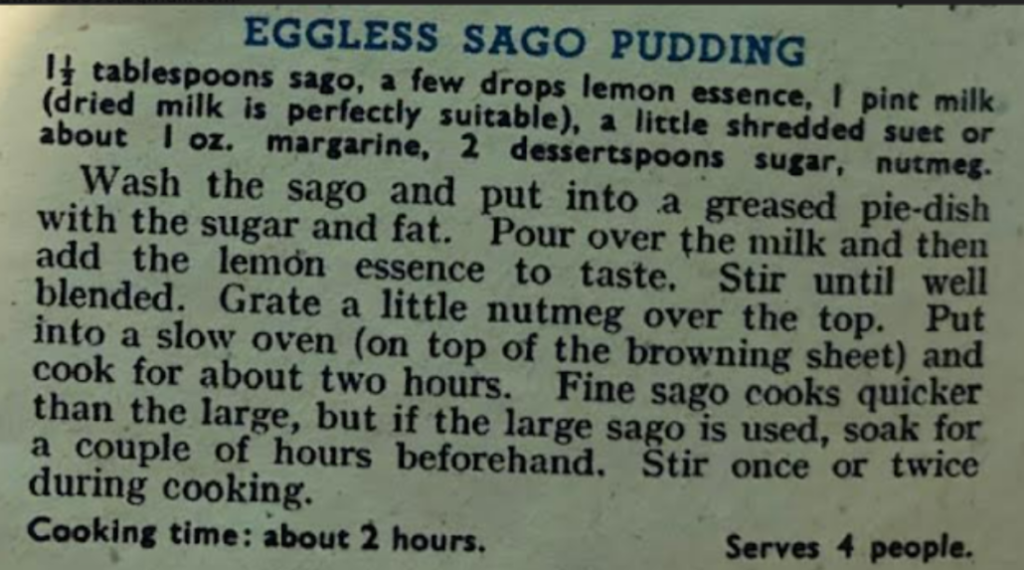
Women’s magazines from the 1940s are riddled with wartime propaganda. Whilst their husbands, brothers and fathers were fighting overseas, women learnt to effectively hold down the household under wartime restrictions. This isn’t to say that women of the 1940s were exclusively homemakers; there are plenty of ads in the February 1942 issue of Woman that suggest otherwise. There’s even an old Tampax advert with the slogan “Women are winning the war of freedom”, with a picture of a woman in full uniform at work on an army tank.
Some other ads shouted about the importance of friendly consumerism of household items. An advert for Parozone (a solution that sterilized clothes in cold water) has the bold slogan, “SAVE FUEL”, a subject Ruth Morgan talked about in her section, dubbed, ‘BARGAIN BAKING’. Recipes in WWII-time magazines are fascinating as the rationing of ingredients (even eggs!) put huge limitations on creativity. Upon skimming through the recipes, the one that intrigued me most was the Eggless Sago Pudding. Like many, I initially had no idea what sago was. Upon doing research I found that, like tapioca, it’s made up of balls of starch derived from plants.
I decided to give it a go and subsequently hosted a dinner party with the sole purpose of forcing my friends to try it. Despite being easier to follow than the 1907 recipe in the last issue, I’ve made a couple of adaptations to make this recipe more student-friendly:
- Line a pie dish with baking paper, grease the baking paper with margarine so that it sticks to the dish. The recipe stated that an ounce of margarine should be used. Considering we don’t measure ingredients in ounces anymore, using Google, I translated the one oz into roughly 28 grams. I was lucky to use my great-grandmother’s authentic 1940s glass pie dish for this recipe.
- Rinse the sago with water (I used five tablespoons as the sago I used was very fine), then put it in the pie dish.
- Using a measuring jug, pour out a pint of milk over the sago in the pie dish.
- Add two dessert spoons of sugar (I used white caster sugar) and a few drops of lemon essence. I added several extra drops of lemon, aware of the potential for bland flavouring.
- Grate some nutmeg over the top but be careful not to grate your fingers, as I learnt the hard way…
- Put in the oven for two hours. I put it in for one hour, and checked on it every 10 or so minutes. After the first hour was up, I took it out of the oven to stir it around.

Upon first impression, it resembled lasagna. After scooping some out, it looked more like frogspawn. I quickly googled sago pudding to see if it was supposed to look like that. It was…
Here’s the verdict from my friends and housemates:
- “You should never judge a book by its cover, the same way you shouldn’t judge a dessert that looks like an octopus.”
- “It tastes like lemon with aftershocks of nutmeg but it could be sweeter. Then again, we are used to sweeter desserts.”
- “Tastes good but has the consistency of Elmer’s glue.”
- “It is like the skin of a rice pudding. In a bad way” (My housemate specified that they meant this “in a bad way”.)
- “It has starchy savoury undertones.”
Evidently, the sugary, lemony, nutmeg-gy flavour was satisfying, but the slime-like texture of the sago pearls was off-putting. That being said, though, four out of five people finished their portion. Would I make this again? Probably not. But it’s definitely made me appreciate how many more dessert options we have now, and I must admit I’ve never been more grateful for the humble egg. Is this a student friendly dish? No. Sago pearls are now considered a luxury and are not a cheap student cooking item. Fascinating to see how much cooking has changed through the decades.
Special Thanks to Ella Stoneley for the photos.
